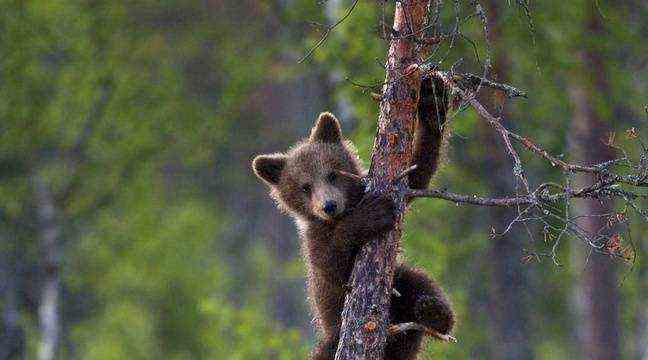A brown bear cub like those in the Pyrenees. Drawing. – Julian Cok – Solent News – Sipa
- Twenty-five years ago, the first brown bear releases were organized in the Pyrenees in an attempt to repopulate the mountains.
- The population has grown significantly from around ten in the mid-1990s to around 64 today, but it lacks genetic diversity.
- Bear associations are calling for new releases to be organized, as scientists recommend, to ensure the species’ viability in the long term.
Twenty-five years ago, the first brown bear releases were organized in the Pyrenees in an attempt to repopulate the mountains, at a time when the species had reached a critical threshold. The Slovenian bears Ziva and Melba were the first to take on this heavy responsibility, on May 19 and June 6, 1996 in Melles, Haute-Garonne. If the 11 releases carried out in total since 1996 have made it possible to increase the bear population, its viability in the Pyrenees is still not certain.
“Contrary to what we sometimes hear, it is not a whim of urban ecologists to reintroduce bears, but it was a local desire of local actors who wanted their mountains to conserve the biodiversity they hold so dear. », Reminds Michel Clouet, president of Artus France
Around 64 bears in the Pyrenees
The first releases in 1996 and 1997 made it possible to increase the population to ten individuals but it was in 2006 that a boost was given with the arrival of four females and a male. “The population is now at least 64 individuals in the year 2020, this is a provisional figure, likely to be corrected at the end of the year”, points out Alain Reynes, director of the Pays de l”association. Ours-Adet.
Most of this population (59 bears) is settled on the eastern part of the Pyrenees, knowing that two males go back and forth between the east and the west. “This year with the birth of the first Sorita cubs in Béarn, we hope that this will help to change the situation in this part of the Pyrenees”, points out Alain Reynes. For the year 2021, 15 cubs are still expected.
Since 2006, the annual population growth has been almost 11%, “which is normal for a small population of bears, even if it is not yet viable”, comments the director of the Pays de l ‘association. Ours-Adet.
Low genetic diversity
When we look at the genealogical tree of the Pyrenean bear population, we understand that it is mainly two females that have reproduced. Thus, there are 31 cumulative descendants for Hvala and 26 for Caramelles. And 51 to 56 of the bears present are direct or indirect descendants of the male Pyros, a figure to be related to a population of 64 individuals… “There are only six individuals who are not related to these three bears, including a female. breeder and a breeding male ”, comments Alain Reynes.
A study on the genetic diversity of Pyrenean bears was carried out in 2017 and it shows a degradation between 1996 and 2016, “because of the reduced number of founder animals”, he reports. The effective population size, which refers to breeding individuals who actually participate in the development of a population, stands at 3.6 in 2017 while the biologically recommended size for a viable population is 50.
What to do to ensure viability?
For associations, it is clear that new blood must be brought in to limit inbreeding within the bear population. In a study commissioned by the State (released in 2013 and confirmed in 2018), the National Museum of Natural History recommended releasing a minimum of six females and ideally 13 females and four males. “If there had been no release, there would be no more bears, and the lessons to be learned are that if there are no other releases we will be big difficulty. It is better not to fall behind on what scientists tell us, ”said François Arcangeli, EELV regional advisor in Occitania and President of the Pays de l’Ours – Adet association. The European “Habitats” directive of May 1992 legally obliges France to act to restore a viable population. “The increase in the population cannot justify inaction, in particular because of the weakness of genetic diversity which will eventually pose problems for this population which is not yet viable”, warns Alain Reynes.
Without drawing numbers, the associations committed to the reintroduction of the bear in the Pyrenees want a clearer policy in this area to emerge. Of the 17 releases recommended by scientists in 2013, only three have taken place since.

